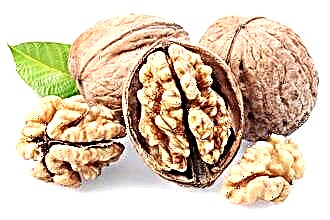Despite the development of modern pharmacology and an increase in the availability of medical care, the gifts of nature continue to take their place in the treatment of various human diseases. For maxillary sinusitis, a large number of folk recipes have been used, known since antiquity. One of the most effective ways to relieve unpleasant symptoms and speed up recovery is to treat sinusitis with radish.
Useful properties of black radish
 Of the whole variety of species of the genus "Radish", only black radish is suitable for the treatment of sinusitis, which is one of the varieties of the species Raphanus sativus L. (sowing radish), which also includes such well-known root crops as radish, daikon and forehead. This vegetable is cultivated in Asia, North America, Europe, Australia.
Of the whole variety of species of the genus "Radish", only black radish is suitable for the treatment of sinusitis, which is one of the varieties of the species Raphanus sativus L. (sowing radish), which also includes such well-known root crops as radish, daikon and forehead. This vegetable is cultivated in Asia, North America, Europe, Australia.
He is well known in Russia as well. Of all the Raphanus sativus L. species, it is the black that is the sharpest, which determines its healing qualities. They began to treat various ailments with this root crop in ancient Egypt.
Black radish for sinusitis is effective due to the unique combination of minerals, vitamins, essential oils present in it. The vegetable contains fructose, sucrose, proteins and fats. It is rich in vitamins A, C, K, B9, calcium, iron, magnesium, phosphorus, zinc, potassium, sodium. The beneficial properties of black radish used for sinusitis include:
- Bactericidal effect. Microbes are suppressed and destroyed by phytoncides, which are found in large quantities in fruits, this contributes to the resistance to infectious diseases. In fact, black radish is a natural antiseptic and antibiotic, the lysozyme found in it inhibits the growth of fungi and bacteria.
- The analgesic effect helps in the presence of pain syndrome characteristic of inflammation of the paranasal chambers of the nose.
- Normalization of the water-salt balance as a result of the removal of excess fluid from the body tissues due to the presence of a large amount of potassium salts. This helps to reduce swelling of the mucous membranes and improve nasal breathing.
- Flavanoids improve cell metabolism, enhance the activity of enzymes, neutralize toxins, thereby reducing the general intoxication of the body and arresting the inflammatory process. The warming effect increases blood flow to the affected organ.
- Increasing the general immunity and resistance of the human body to infections.
So that, if necessary, there is always a fresh product at hand, suitable for use for medicinal purposes, you need to properly store root crops.
 Young fruits of the summer harvest are stored in the refrigerator (2 degrees Celsius, humidity 95%) for up to 3 weeks, and in the room - no longer than one week.
Young fruits of the summer harvest are stored in the refrigerator (2 degrees Celsius, humidity 95%) for up to 3 weeks, and in the room - no longer than one week.
Winter varieties are more unpretentious, they can be laid in the refrigerator for the winter immediately after harvesting, where they will not deteriorate for up to six months. Black radish is well preserved in the cellar at a temperature not higher than 3 degrees and humidity up to 85%, especially if it is sprinkled with wet sand. It is necessary to pay attention to the integrity of the fruit so that the entire crop does not rot because of one bad root crop. Proper storage leads to the fact that by the spring the beneficial properties of the vegetable are not only not lost, but also enhanced.
Radish Medicines Recipes
Preparations based on black radish are most often used in the form of applications, lotions and nose drops. You need to use only juicy fresh fruit containing the maximum amount of nutrients.
For example, an old effective recipe for an application for the treatment of catarrhal sinusitis. Wash and chop one fresh medium-sized root vegetable until a gruel or puree with the peel is. To do this, you can use a fine grater, meat grinder or blender. The resulting substance is spread on a single-layer cheesecloth and covered with the same piece of cheesecloth on top.
To avoid burns, the face must first be lubricated with any vegetable oil (olive, peach) or ordinary baby cream. After that, the compress is applied to the cheeks in the projection of the maxillary sinuses, covered with cellophane or parchment paper on top and tied with a scarf or warm scarf.
The heat from the compress quickly builds up and turns into a burning sensation. This is normal for the active substances contained in the root vegetable. Should not be tolerated longer than 10 minutes, this time is quite enough for the required therapeutic effect. After removing the compress, you need to wipe your face with a warm damp towel and spread it with baby cream or an anti-burn agent like "Panthenol". Redness on the skin will disappear after a few hours, so it is best to do this treatment before bedtime. After the procedure, it is not recommended to go out into the fresh air. To cure, it is enough to repeat the manipulation for a week.

Another recipe is a variation on the previous one. In an enamel or glass container, mix 100 g of grated vegetable, 150 g of flour and 2 tablespoons of liquid honey. From the resulting mass, cakes are formed and superimposed on the sides of the nose. The patient should be seated to prevent the caustic juice from getting into the eyes. To achieve the desired result, it is enough to hold the compress for 20 minutes. The entire course is 7 days. Before and after application, rinse the nose with saline solutions, chamomile decoction or a weak furacilin solution to evacuate the outgoing secretion.
Also, a good result is shown by the introduction of plant components directly into the nasal passages. At the same time, the drainage of the air chambers is improved, the exudate is liquefied and the mucous membrane is disinfected.
- Freshly squeezed root vegetable juice drip in the mornings and evenings into each nostril, 5 drops for two days in a row. The nose should first be cleaned of mucus.
- The plant sap is mixed with boiled water in a ratio of 1: 3. Cotton swabs are moistened in the solution and inserted into the nose for 5 minutes. 2 repetitions are enough for 3 days.
- Black radish juice, honey melted in a water bath, and aloe juice are reduced in a ratio of 2: 1: 1. The mixture is shaken and dripped in each stroke, 2 drops. It is recommended to tilt the head so that the liquid can enter the sinuses. Sneezing and a slight burning sensation after the end of the procedure are within normal limits, if these signs disappear after a few minutes.
After squeezing out the juice, the remaining cake in a warm form can be applied to the sinus area for 10 minutes. Some connoisseurs also advise breathing in essential oils from the crushed fruit daily.
Features of use and contraindications
 With all the benefits of black radish, it also has its own contraindications for use, which should not be forgotten. You can not use it in such cases:
With all the benefits of black radish, it also has its own contraindications for use, which should not be forgotten. You can not use it in such cases:
- In chronic and acute sinusitis, if purulent discharge is present.
- With sinusitis of fungal or dental (odontogenic) origin.
- With individual features of the structure of the nasal cavity (deformities of the nasal septum, the presence of polyps), which can lead to the ingress of actively flowing infected exudate into healthy sinuses.
- It is not recommended to use this method for the treatment of children in order to avoid burns of the mucous membranes and swelling of tissues in the nasal cavity.
Also, do not ingest root vegetable juice in combination with honey for people with gastritis, ulcers or kidney stones. If the patient is prone to allergies, then before alternative therapy, it is better to consult an allergist and otolaryngologist. Do not allow the juice to get into the eyes; when instilled into the nose, it is advisable not to swallow the liquid, but to spit it out.
If, after 5 days of treatment with the use of the plant, the patient did not feel any positive changes, then the therapy should be suspended and the attending physician should be consulted about correcting the treatment regimen, it may make sense to switch to pharmacological drugs.
You also need to go to the hospital if, after the procedures, the redness on the skin or burning sensation inside the nose does not go away for a long time.



